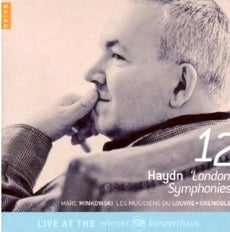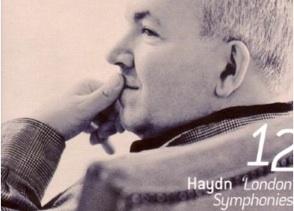
We have funny reactions to composer anniversaries. The “Mozart Year” (the bicentenary of his death, 1991) produced a flood of recordings old and new, including dueling complete works from two labels. We’re now toward the end of a “Schumann and Chopin year” (both composers were born in 1810), and the compilations, anthologies, and so forth of both are spewing out. For Chopin, that includes a number of complete-works editions. Schumann being a more complicated project — he wrote lots of tiny pieces in genres more or less defunct — the usual approach has been “The Schumann Masterpieces,” or equivalent.
The bicentenary of Franz Joseph Haydn’s death, last year, by comparison caused scarcely a ripple, recording-wise. Partly that’s because there’s simply too much music — even Brilliant Classics, which has done more to add to the stock of recorded Haydn than any other label in the last decade, didn’t produce a “Complete Works.” But partly it’s because Haydn has become at once more familiar and less celebrated. It is not as rare as it used to be to see a pianist or a string quartet or even an orchestra devoting substantial time to Haydn. And, so far as recordings go, we are practically in a golden age.
Listen to the Music
Symphony No. 103, Adagio - Allegro con spirito
Marc Minkowski’s new set of Haydn’s “London” Symphonies, with Les Musiciens du Louvre, is a case in point. Not that long ago it would have been rare to find any small label issuing all 12 of Haydn’s last symphonies at one go, and borderline impossible to find them so well-played as they are here.
I was a little apprehensive at the thought of Minkowski and his band doing this music, as I know them mainly from recordings of French Baroque repertoire quite a bit before Haydn. There, their keynotes were color and verve, with refinement applied the way a cautious cook would cayenne. You couldn’t guess that this was the same orchestra. (As indeed it probably isn’t; judging by the booklet photos, this is a pretty young band.)
The string playing is gutsy but silky-smooth when needed; the many solo contributions (Nils Wieboldt’s cello especially) are deftly and lovingly played. And the wind playing is suave to a degree that might actually become annoying if carried a shade further. If bassoon playing gets much more refined than this, people are going to be reduced to explaining the bassoon joke in the slow movement of No. 93.
Minkowski’s a bassoonist himself, and that may underlie some of the interesting voicings here. Inner and lower lines are more prominent than conductors generally make them. It’s an unexpected treat to hear Haydn viola parts treated as something other than an appendage either of the cellos or of the violins. Here, they sing whenever they can.
And while the old, not-quite-voluntary rough edges of period-instrument performance are hardly to be heard here, “edge” in the sense of danger is. One of the hardest things for musicians to convey about Haydn is how perilous his plots are. An amble becomes a flight; a stroll through a garden becomes a frantic search for the one exit. Sometimes Haydn contrives a way out, and sometimes he just hits the composer’s “reset” button and the impasse is as if it never happened. You know, this being a Haydn symphony, that everything will come out all right; but you don’t know how, and in the moment the danger is real. Minkowski and band “get” that part of Haydn. I have no higher praise than that.
As to performance-practice particulars: Minkowski goes whole hog with a long, two-note drum fanfare for the opening of the “Drumroll” Symphony (No. 103). In the finale of No. 98, where there’s a tiny keyboard solo (played, at the premiere, by the composer), there’s a harpsichord, but not anywhere else. The little violin solo in the Trio of No. 97, marked “Salomon solo, ma piano” (that is, the concertmaster [Johann Peter Salomon] by himself, but quietly), seems too loud to me, but it always does. (Maybe it’s meant to, if it comes to that. A modern concertmaster’s “piano” is generally an ordinary violinist’s “mezzo-forte,” and modern concertmasters don’t generally have to direct orchestras themselves.)
The surprise in the “Surprise” Symphony I won’t describe, other than to say that it takes genius to mess with everyone’s expectations when you realize that some of the audience know the piece and some don’t.

